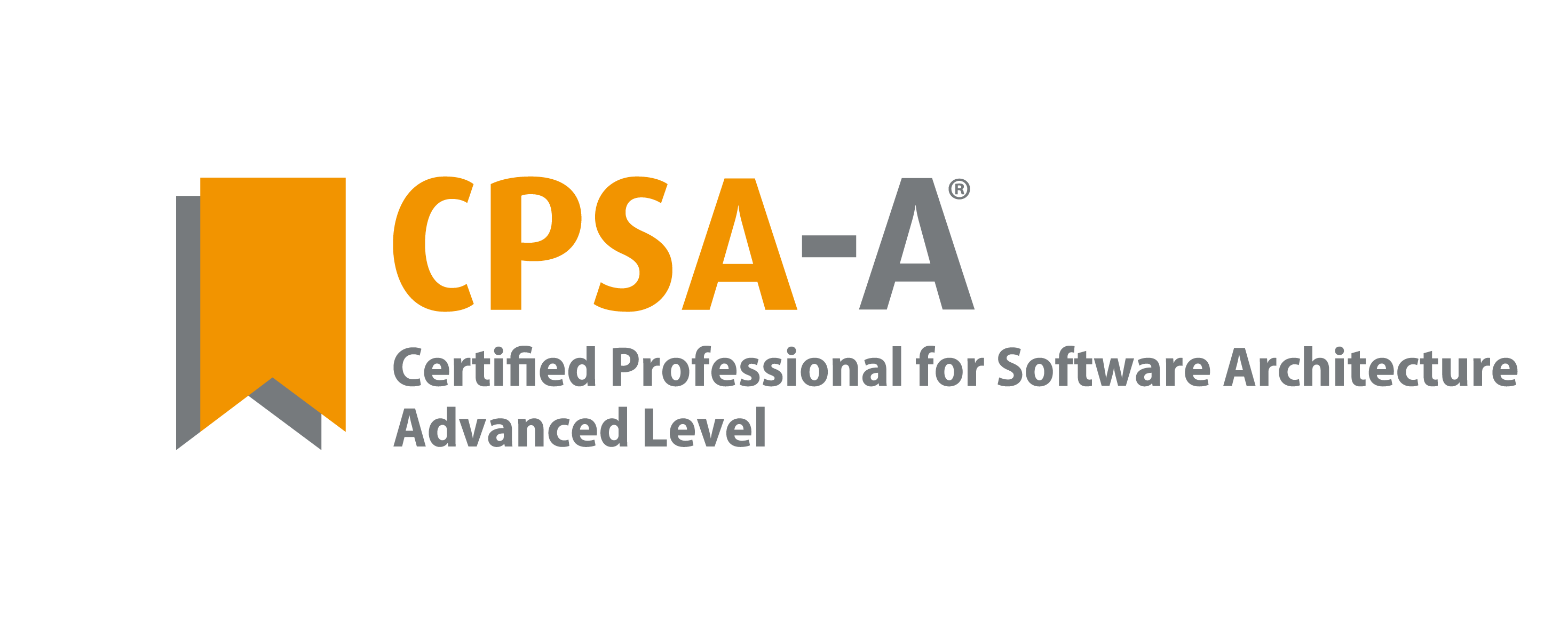
Descripción
Asistir al curso iSAQB® CPSA-A Enterprise Architecture Management (EAM) otorga a los participantes 30 puntos de Competencia Metodológica (MC) para los 70 puntos requeridos para ser elegible para presentar el examen iSAQB CPSA-A con Brightest. Es importante recordar que, como parte de los 70 puntos requeridos para presentar el examen iSAQB CPSA-A con Brightest, necesitará al menos diez puntos de competencia en cada una de las siguientes áreas:
- Competencia Técnica (TC)
- Competencia Metodológica (MC)
- Competencia Comunicativa (CC)
La formación acreditada iSAQB® EAM - Enterprise Architecture Management (CPSA-A) se basa en el currículo actual de iSAQB®:
Parte 1 - Conceptos básicos de EAM (Enterprise Architecture Management)
- Identificar y explicar las misiones, objetivos y beneficios de EAM. Interacción de la estrategia (TI) y EAM
- Explicar la diferencia entre EAM y E(IT)AM
- Explicar y guiar en la evaluación de un portafolio de aplicaciones
- Nombrar y describir las tareas y desafíos de la gobernanza
- Nombrar y describir los requisitos para las herramientas de EAM
Parte 2 - Procedimientos en el EAM
- Presentar y explicar el proceso de formulación de una visión arquitectónica
- Presentación y explicación del análisis de la arquitectura existente
- Presentar y explicar el desarrollo de la arquitectura objetivo
- Explicar los principios corporativos en la arquitectura empresarial y cómo implementarlos
- Presentación y explicación de la importancia de la arquitectura empresarial como marco regulatorio para las estrategias de TI
- Gestión y evaluación de proyectos de implementación
Parte 3 - Repositorios y metamodelos
- Metamodelo de Arquitectura
- Limitar los diferentes tipos de información
- Presentación y explicación del uso y gestión de un repositorio EAM
- Identificar y explicar la definición y uso de arquitecturas de referencia
Parte 4 - Gobernanza y gestión del cambio
- Identificar y describir los roles de la gobernanza de TI
- Presentar y explicar la función, tareas y composición de los consejos directivos
- Identificar y describir modelos organizativos para la gobernanza de TI
- Identificar la diferencia entre mejores prácticas, directrices arquitectónicas y principios
- Nombrar y describir las tareas de una revisión de gobernanza utilizando COBIT
- Presentar y explicar COBIT
- Propósitos y beneficios de COBIT
- Presentar y explicar los principios fundamentales de gobernanza de COBIT
Parte 5 - Introducción de EAM
- Presentar y explicar los puntos de entrada más importantes para un EAM
- Promoción y optimización del EAM en la organización
- Comunicar el propósito y beneficios de la implementación de EAM a los interesados
- Rutas de migración para introducir un EAM en un entorno de TI existente
- Representar los límites
- Representar los límites al introducir un EAM en un entorno de TI existente
Parte 6 - Marcos de arquitectura empresarial
- Identificar y explicar los requisitos y beneficios del Marco de Arquitectura Empresarial
- Nombrar y explicar la diferencia entre los diferentes tipos de estructuras arquitectónicas
- TOGAF
Público objetivo
El seminario CPSA-A Enterprise Architecture Management es especialmente valioso para profesionales que desean comprender mejor cómo gestionar la coherencia en sistemas de TI complejos y entornos de aplicaciones.
Requisitos
Para participar en cualquier curso iSAQB® CPSA - Nivel Avanzado, debe contar con el certificado iSAQB® Certified Professional for Software Architecture - Foundation Level (CPSA-F).
Prerequisitos de conocimiento:
Los participantes deben contar con los siguientes conocimientos previos:
- Fundamentos del desarrollo de arquitecturas: importancia y delimitación de la arquitectura, procedimientos, influencias y requisitos, decisiones de arquitectura, modelos y documentación con vistas, tal como se enseña en el Nivel Fundamental CPSA-F.
El conocimiento en las siguientes áreas puede ayudar a comprender algunos conceptos tratados en este curso:
- Experiencia práctica en el campo de la arquitectura y conocimiento de al menos una tecnología o plataforma moderna para el desarrollo de aplicaciones distribuidas
- Conocimiento de desafíos típicos en el ámbito de las arquitecturas empresariales:
- Definición de objetivos empresariales (TI)
- Planificación estratégica (TI)
- Gestión del portafolio (TI)
- Gestión del ciclo de vida de las aplicaciones
¡Los planes de estudio y los exámenes de muestra vienen pronto!
¡Los planes de estudio y los exámenes de muestra vienen pronto!